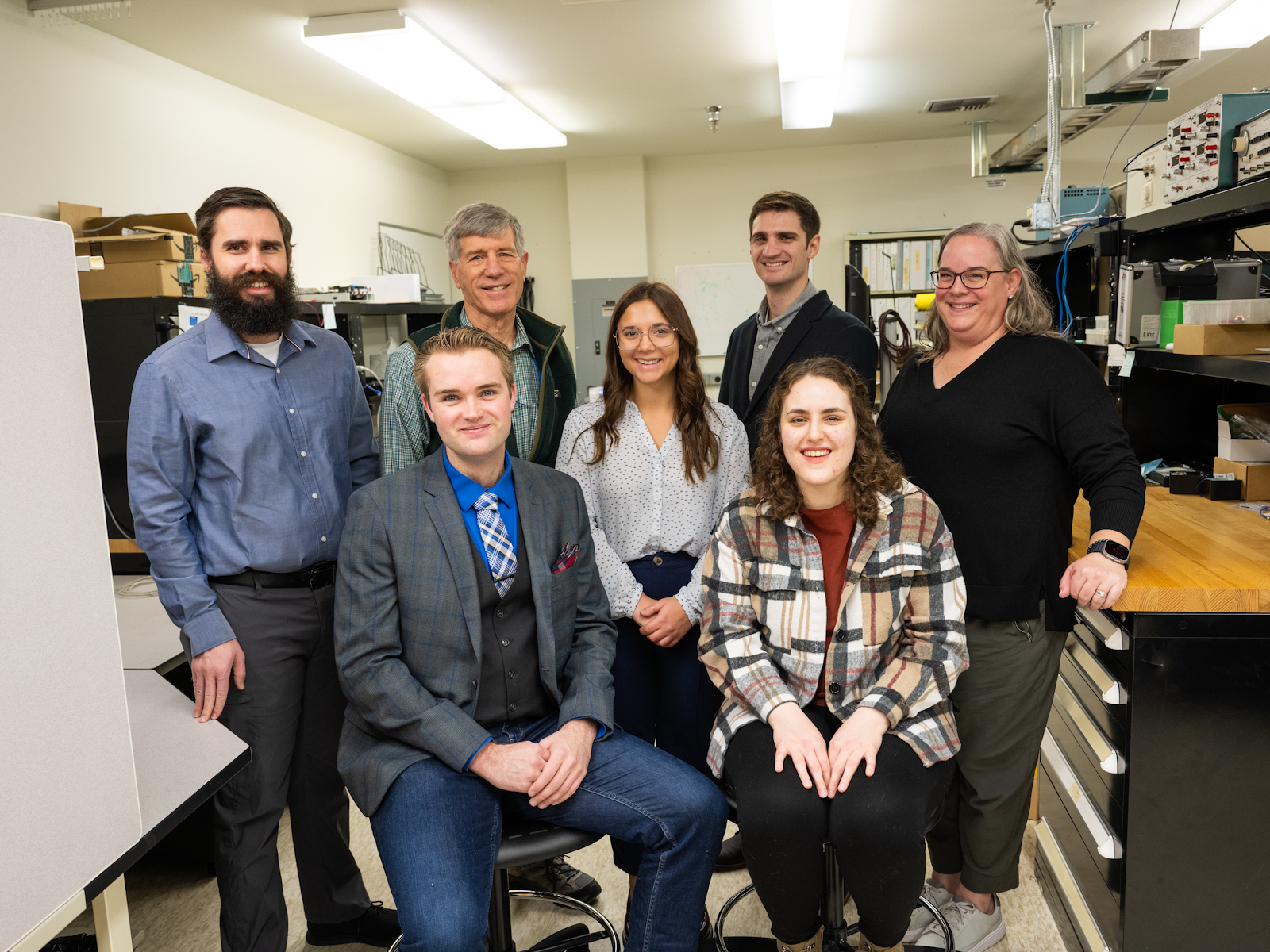Team Receives Science, Engineering Award for Evaluation of Firefighter Safety Technology
Collaboration explored breathing equipment performance in firefighter scenarios

Selected PNNL staff were recognized at the Department of Homeland Security Science and Technology Directorate Under Secretary’s Awards Ceremony for a project that evaluated self-contained breathing apparatuses for the first responder community.
(Image by Red_Shadow | Shutterstock)
In a fire, a firefighter’s iconic face mask and air regulator—called a self-contained breathing apparatus or SCBA—delivers life-saving protection from harmful gases in the air. While the technology has improved over the years, it is tough to tell if new models meet current firefighters’ technical needs in the field.
Pacific Northwest National Laboratory (PNNL) partnered with the Department of Homeland Security (DHS) National Urban Security Technology Laboratory (NUSTL) and the Fire Department of the City of New York (FDNY) to push several devices to their limits to find out. The team received a DHS Science and Technology Directorate (S&T) Under Secretary’s Award for Science and Engineering for their work.
“It is really meaningful when you think about if a firefighter comes to your house today, the gear they’re wearing is what we tested and helped make safer,” said Jacob Ellis, electrical engineer at PNNL. The award-winning project team comprised PNNL electrical engineers Ellis, Sasha Smith, Rick Pratt, Trey Shenk, Devon Hobbs, and Eric Gonzalez; material scientists Daiwon Choi and Cassidy Anderson; mechanical engineers Luke Placzek and Sean McGaughey; systems engineer Alisha Piazza; chemist Heather Colburn; advisors Rich Ozanich, Rachel Bartholomew, and Samuel Ortega; and rounded out by the NUSTL team of Karin Decker, Gladys Klemic, Cecilia Murtagh, Jared Oren, Bhargav Patel, Heston Posner, Joe Russo, and Hasan Shahid.

Over the course of a year, the team conducted a multi-phased evaluation of five SCBA devices to evaluate how they would function in the complex environments faced by firefighters in a large metropolitan area like New York City. The team focused on wireless electronic safety systems, including battery capacity testing and communications connectivity in different radio frequency environments, which presented the biggest potential benefit to FDNY in the concrete jungle of New York City.
“We conducted a comprehensive evaluation of battery performance, testing how long the devices would last in adverse temperature conditions. We also evaluated the devices’ communications systems to test their limits and see where network connection problems occurred,” Ellis said. While conducting the tests, the team identified bugs or technical issues that were shared with the equipment vendors to make the equipment more resilient and safer.
“The vendors were able to fix the issues in real time, and now that will improve operations for future users,” Ellis continued.
Their resulting study, laboratory testing, and final presentation provided critical information to senior leadership at the FDNY to inform a multi-million-dollar acquisition decision. At an award ceremony on December 12, the NUSTL-PNNL team was awarded the DHS S&T Science and Engineering Award for their contributions to improving the operational readiness and safety posture of the firefighter community by conducting a rigorous evaluation of commercially available SCBAs.
“We did what we set out to do: make sure that equipment firefighters are using meet the technical demands of the job. This work improved upon equipment that helps prevent loss of life, of both firefighters and ultimately the people they protect,” said Smith.

Published: December 19, 2023